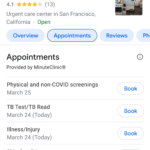First-party data: 4 internal checks to make sure you’re ready
First-party data has become a bit of a buzzword in digital marketing. We need to accumulate it and account for it with the depreciation of the cookie, but that can take different forms and require different levels of technical execution.
The core difference between first-party data and third-party data is you own it. You built the relationship with the prospect that earned their consent to be tracked/have their contact info stored. You’re not using a bought list, nagging with remarketing just because a person visited your site or sharing data across domains outside the first party set.
The core questions every business needs to ask itself are:
- Is the data first-party compliant?
- Does the opt-in process build trust and engagement?
- Are you getting the full value out of your first-party data?
- Is this a short-term or long-term implantation?
1. Is the data first-party compliant?
There are two major considerations in first-party data compliance:
- National and international laws
- Integration with digital marketing channels
First and foremost, it’s important that your brand collect and legally store your first-party data. Both GDPR and CCPA have stringent requirements on storing data and its accessibility.
One of the universal requirements is hashing data. Hashing data converts your first-party data into a random series of numbers and letters while maintaining the core functionality. You can use advertising tools like customer lists without compromising your prospects/clients’ privacy.
Most ad platforms and CRMs will automatically do this for you. The only operational concern is when you need to download a list and share it with a team member/vendor. You can avoid this by sticking to existing data sync integrations (Zapier can be helpful if you need to create a custom one). That said, if there is no other option, the following protocols should be put in place to protect the data:
- User log-ins getting access should be protected with two-factor or multi-factor authentication.
- User data should not be stored on personal computers.
The other big consideration is tracking. Sites using Google Analytics must use global site tags (which allow for GDPR compliant modeling) and language affirming the user consents to being tracked. The user must see the levels of tracking and opt into what they want (instead of opting out).
Another significant consideration for brands is their domain structure. Google confirmed that brands are allowed five domains as part of their first-party data set. First-party data sets dictate which domains can share analytics and tracking data.
If you’re using a lot of vanity domains or country-specific domains, you will need to consider the pros and cons of consolidating into a sub-domain or subcategory structure. The biggest consideration is whether the data loss will be big enough of a con to outweigh the SEO fluctuations that come from migration. Regardless of which path you choose, you will need to make sure any paid traffic is on no_index/no_follow.
2. Does the opt-in process build trust and engagement?
On-site tracking consent forms are essential for website design and CRO (conversion rate optimization). A lot goes into successfully securing user consent from the wording to the placement.
The core needs are:
- Simple and easy to understand permissions on tracking.
- A link to the privacy/cookie policy.
- The ability to accept or decline tracking.
Getting creative with the language can help inspire brand affinity. However, the clarity of the message must be maintained.
HubSpot does this well with their verbiage:
“We use cookies to make Hubspot’s website a better place. Cookies help provide a more personalized experience and relevant advertising for you and web analytics for us. To learn more about the different cookies we’re using, check out our cookie policy (baked goods not included).”
It does a great job of disarming the user, and the design makes consenting to cookies a hard-to-miss CTA (call to action). That said, it leads with the brand benefits instead of user benefits, which could prevent users from accepting tracking.
Going simple has its advantages, though – as NinjaCat displays:
“By clicking ‘Accept All Cookies,’ you agree to the storing of cookies on your device to enhance site navigation, analyze site usage, and assist in our marketing efforts.”
The additional step of letting folks see exactly what cookies they will be opting into is helpful as well:
While this approach doesn’t scream branded tone, the transparency and ease of use are powerful tools in securing tracking consent.
If there’s one complaint about the NinjaCat approach, the cookie tracking consent element is small and on the bottom of the page. There is no hard answer on which approach is better. However, it is important to account for human behavior. Most people read from left to right, from the top down. A small consent element at the bottom might get missed. It’s important to test what works best for you.
3. Are you getting the full value out of your first-party data?
First-party data has a lot of utility. From targeting audiences to tracking user behavior and interests, there’s a lot of value to harvest. It can be easy to fall into the trap of using data for only one channel or not sharing the resource across departments.
When setting up your customer lists, make sure you’re configuring them in a way that can be easily synced into all ad platforms. The easiest way to do this is to use email addresses for targeting. However, this will impede the match rate (will remain closer to 70%).
It’s important to note that LinkedIn, Facebook, Google, Microsoft, and Twitter have different field orders. Be sure that you’re setting up the sync in a way that won’t break the system.
Using these audiences across channels can help continue the conversation and find new prospects. Similar audiences (Google and Microsoft) will be created automatically. Lookalike (Facebook/Instagram/LinkedIn) requires you to manually create them.
Based on how you’ve set up your domains, you’ll be able to share analytics and tracking data across your teams. This will enable you to craft better customer journey messaging and maintain attribution.
4. Is this a short-term or long-term implantation?
As you decide on the right actions for your business to be first-party data ready, it’s important to balance short- and long-term impact.
If your current domain structure doesn’t lend itself to the five domain maximum for first-party data sets, you will need to decide whether you migrate. Migrations might make perfect sense long term, but they will be expensive and disruptive in the short term. Testing a cookie consent element will be a much easier change to implement, but the impact is dependent on getting enough traffic for statistical significance.
Ensure that you’re communicating timelines of changes and coordinating with your teams. A good example of this is the need for 2FA/multi-factor authentication in ad networks. Before making the switch, it’s crucial all practitioners have turned on that setting and have access to their means of authenticating.
Key takeaway
First-party data is the path to profit in the privacy-first web. Ensuring compliance is crucial, but that doesn’t mean you need to sacrifice user engagement.
The post First-party data: 4 internal checks to make sure you’re ready appeared first on Search Engine Land.



